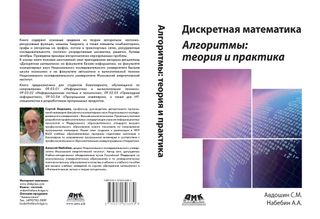?
Дискретная математика. Алгоритмы: теория и практика.
The book contains the necessary information from the algorithm theory, graph theory, combinatorics. It is considered partially recursive functions, Turing machines, some versions of the algorithms (associative calculus, the system of substitutions, grammars, Post's productions, Marcov's normal algorithms, operator algorithms). The main types of graphs are described (multigraphs, pseudographs, Eulerian graphs, Hamiltonian graphs, trees, bipartite graphs, matchings, Petri nets, planar graphs, transport nets). Some algorithms often used in practice on graphs are given. It is considered classical combinatorial configurations and their generating functions, recurrent sequences. It is put in a basis of the book long-term experience of teaching by authors the discipline «Discrete mathematics» at the business informatics faculty, at the computer science faculty of National Research University Higher School of Economics, and at the automatics and computer technique faculty of National research university Moscow power engineering institute. The book is intended for the students of a bachelor degree, trained at the computer science faculties in the directions 09.03.01 Informatics and computational technique, 09.03.02 Informational systems and technologies, 09.03.03 Applied informatics, 09.03.04 Software Engineering, and also for IT experts and developers of software products.
